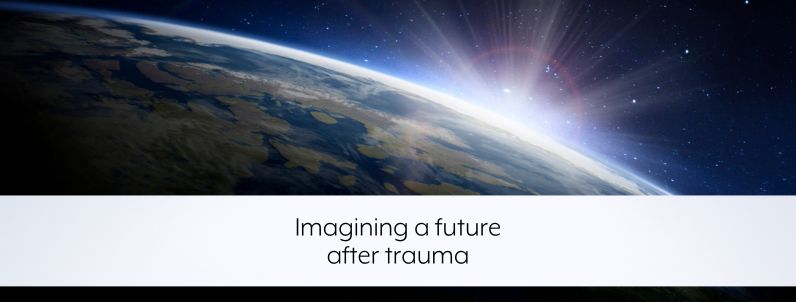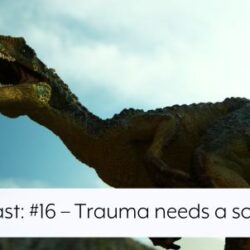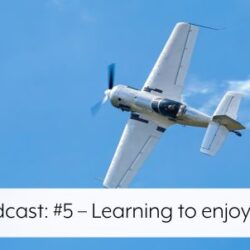
Being traumatised is a tough gig. Maybe one of the hardest. It’s exhausting, it’s debilitating, it affects every area of your life and it can feel insurmountable.
So it’s difficult to think that recovery is possible, even a little bit of recovery. Maybe it feels impossible to think in terms of significant recovery. And harder still to think in grand, magnificent, skyscaper-type ways about recovery.
But there’s so much more to ‘recovery’ than just neutralising symptoms – handling flashbacks, managing depression or anxiety, reducing uncontrolled switching, avoiding dissociative fugues. In other words, recovery is more than an absence of negative symptoms. There’s a life beyond.
A lot of people with dissociative identity disorder (DID) debate if their goal is integration of their parts. Do you want to continue to live as a multiple, but with co-consciousness and co-operation? Do you want partial fusion of parts who want to integrate? Or do you want to integrate fully? They are the three most common options discussed.
I don’t engage in this debate because I think it’s missing the point. It’s seeing the world only through the lens of trauma. It’s asking, how much trauma do you want to live with? Personally, my answer to that question is ‘none’. And I think that’s possible for all of us.
Because we were not born for trauma. That is not why we exist.
And our lives are not determined by what has happened to us. What happened to us is just ‘what happened to us’. Other things will happen to us in the future – hopefully less bad – but what happens to us doesn’t define us. They are just ‘things that happen to us’. They come from outside us, not inside us. They are ‘things that happen to us’. They are not us.
The problem with a trauma worldview is that we live without imagination. We can’t imagine life being any different. We default to what’s familiar and what’s dangerous, so we can be prepared to deal with it. The stuff of other people’s imagination – joy, fulfilment, abundance, goodness, laughter, health, prosperity – feels like mockery or trickery. That’s not what our lives have been like, so we can’t imagine them any differently. Trauma impedes our future vision. Our minds interpret everything through the lens of trauma. It’s like a coloured transparency that changes the hue and tint of everything, like a really bad Instagram filter.
Recovery from trauma exists outside of that filter. Imagination exists with that filter removed.
Imagine this: one day you will wake up excited to get up and face the day, excited about what you’re going to achieve, excited about what you’re going to enjoy. And you’re going to be pumped and full of energy. You’re not worried about things going pear-shaped or having a flashback or being in pain or messing up relationally or your thoughts going out of control or losing time or getting exhausted or any of the other things that are a daily occurrence for you.
Is that hard to imagine? It was for me. For a long time I couldn’t imagine having a day that wasn’t totally awful, let alone a truly great, symptom-free, joy-busting day.
The first step for me was realising that my imagination was impaired by trauma. That I had lost the ability to see a variety of futures: I had become rigid and stuck, fixated on the negative future that mirrored my negative present. I had lost the ability to imagine. I predicted the future based on my present. I had stopped dreaming of possibilities. I had become convinced of my ability to unerringly predict the future – a negative future.
Bessel van der Kolk demonstrated our impairment of imagination with a study of combat veterans who had been traumatised. He used the Rorschach test with them, showing them random inkblots and asking them what they could ‘see’. What did they imagine when they saw these splodges of black on the page?
Nothing.
Non-traumatised people imagine all sorts of things: ‘birds dancing’, ‘an elegant chandelier suspended from the ceiling’, ‘a wolf about to pounce’, ‘two porcelain dolls kissing’. They let their minds play. They see the ink blots and extrapolate outwards. They see things that their eyes aren’t seeing – exactly what we need to do when we imagine the future.
But the traumatised soldiers saw nothing at all. ‘Blobs of ink’. They saw only what their eyes saw, not what their imagination was envisioning.
That’s what trauma does to us. It stops us seeing beautiful possibilities and reduces us to focusing on ugly black globules of ink.
It hadn’t occurred to me that I was so vision-impaired. I thought I was seeing perfectly, when really I was tragically, unconsciously myopic.
So we have debates about integration, because we can only envisage life with trauma-stained blobs. We can’t imagine anything different.
But with our imagination restored, our future opens up. It could be anything. It doesn’t need to be more of the same. It doesn’t need to be full of black blobs. Porcelain dolls kissing. Birds dancing. Beautiful chandeliers. It could be anything at all.
There is so much more to life than being traumatised. Can you imagine it?



4 Comments
Oh my gosh this is so true. This describes beautifully the battle i have been facing and the confusion. Why do i struggle so much with hopelessness, not being able to imagine a future without pain. But more recently i have been asking what can i hope for or imagine for my future? I realised its hard to let go of the familiar story of pain. What actually lies beyond trauma and a life of recovery. The unknown is scary but i am ready to start discovering it. Even if it starts with imagining a new world a future that holds possibilities and dreams..
To think of a future that is joyful is beyond my widest
dream. I am 74 with loads of ink. I’m ready to live each
Moment.
Janet
This so explains my vacuous blank empty responses.. Sometimes it feels dead inside-not even a me to feel it, but reading this makes it feel surmountable. Manageable. Keep fighting. Life after trauma folks, life after trauma. ☮️
Thank you again, Carolyn.